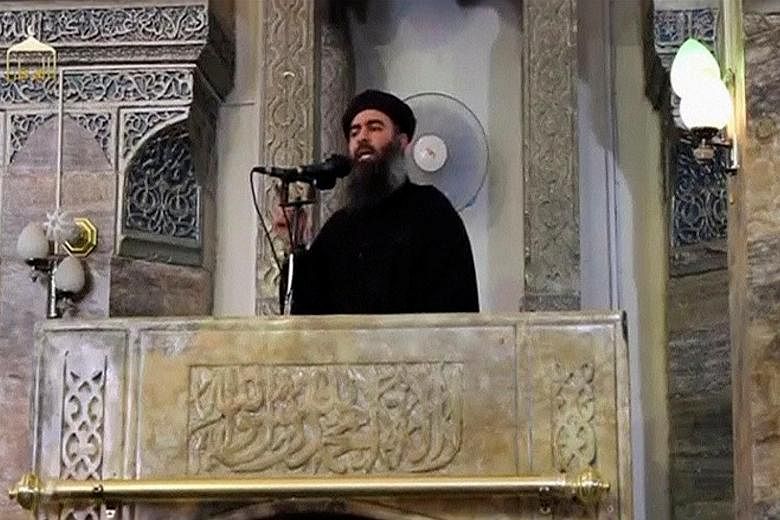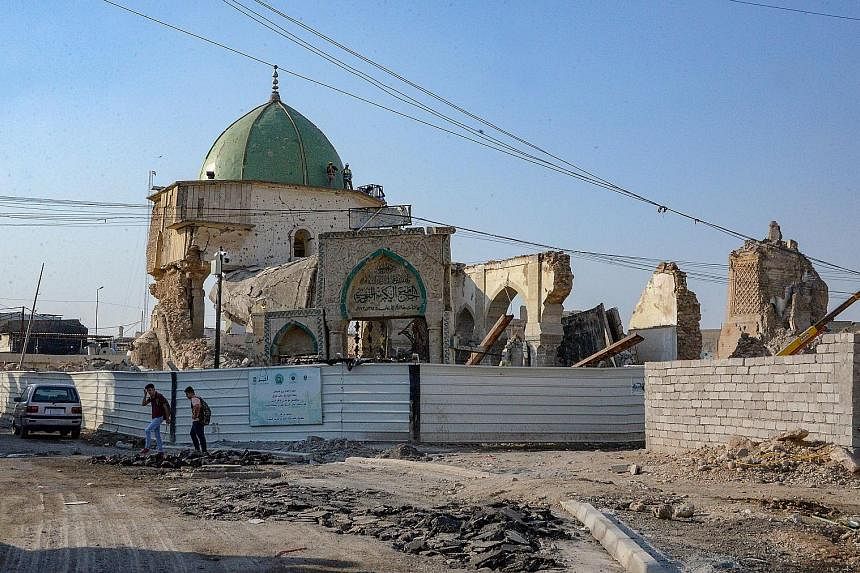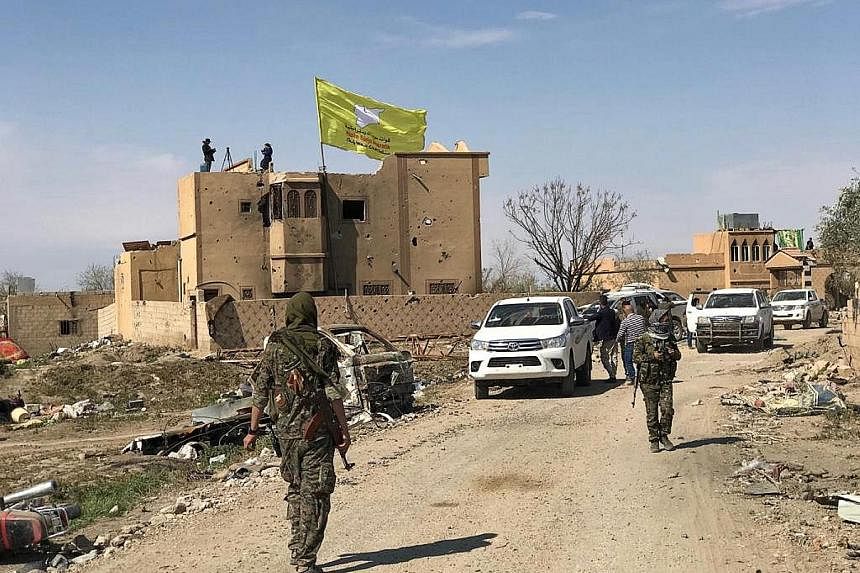BAGHDAD • Abu Bakr al-Baghdadi, the Iraqi militant who rose from obscurity to declare himself "caliph" of all Muslims as the leader of the Islamic State in Iraq and Syria (ISIS), has long been a target for US and regional security forces trying to eliminate the terrorist group.
The caliphate that Baghdadi declared in July 2014 over a quarter of Iraq and Syria was notable for atrocities against religious minorities and attacks on five continents in the name of a version of an ultra-fanatic Islam that horrified mainstream Muslims.
The genocide of Yazidis, adherents of one of the Middle East's oldest religions, illustrated the brutality of his rule. Thousands of men were slaughtered on their ancestral Sinjar mountain in north-western Iraq and women were killed or taken as sex slaves.
Some other religious groups suffered sexual slavery, slaughter and floggings. The group also caused global revulsion with beheadings of hostages from countries including the United States, Britain and Japan.
The US put up a US$25 million (S$34 million) reward for his capture, the same amount it had offered for Al-Qaeda leader Osama bin Laden and his successor Ayman al-Zawahri.
Baghdadi was born Ibrahim Awad al-Samarrai in 1971 in Tobchi, a poor area near the town of Samarra, north of the Iraqi capital Baghdad, whose name he took.
His family includes preachers from the ultra-conservative Salafi school of Sunni Islam, which sees many other branches of the faith as heretical and other religions as anathema.
He joined the Salafi militant insurgency in 2003, the year of the US-led invasion of Iraq, and was captured by the Americans.
They released him about a year later, thinking he was a civilian agitator rather than a military threat.
It was not until July 4, 2014, that he seized the world's attention, climbing the pulpit of Mosul's mediaeval Al-Nuri Mosque in black clerical garb during Friday prayers to announce the "restoration" of the caliphate.
"God ordered us to fight his enemies," he said in a video of the occasion, which presented him as "Caliph Ibrahim, commander of the faithful".
Thousands of volunteers flocked into Iraq and Syria from around the world to become "Jund al-Khilafa" - soldiers of the caliphate - and join him in his fight against the Shi'ite-led Iraqi government and its US and Western allies.
At the height of its power in 2016, ISIS ruled over millions of people in territory running from northern Syria through towns and villages along the Tigris and Euphrates river valleys to the outskirts of Baghdad.
The group claimed responsibility for or inspired attacks in dozens of cities including Paris, Nice, Orlando, Manchester, London and Berlin, and in nearby countries Turkey, Iran, Saudi Arabia and Egypt.
In Iraq, it staged dozens of attacks on predominantly Shi'ite Muslim areas.
A truck bomb in July 2016 killed more than 324 people in a crowded area of Baghdad, the deadliest attack since the 2003 US-led invasion of Iraq.
The group also carried out many bombings in north-east Syria, which has been under the control of US-backed Kurdish forces.
Most of Baghdadi's speeches were distributed as audio recordings, a medium better suited to his secretive, careful character that for a long time helped him evade the surveillance and air strikes that killed more than 40 of his top commanders.
That caution was matched by ruthlessness as he eliminated opponents and former allies, even within Salafi militant ranks.
He waged war on Al-Qaeda's Syrian wing, the Nusra Front, breaking with the movement's global leader, Zawahri, in 2013.
But by the time of the raid against Baghdadi over the weekend, his fortunes - and those of ISIS - were in rapid decline.
With the defeat in its stronghold Mosul, which he declared as the capital of his caliphate, in 2017, the movement lost all the territory it once controlled in Iraq.
In Syria, ISIS lost Raqqa, its second capital and centre of operations, and eventually, earlier this year, its final chunk of territory there when US-backed Kurdish-led forces took back Baghouz.




